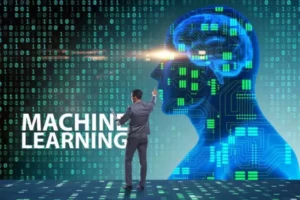GPUs can significantly accelerate AI workloads by handling numerous computations simultaneously. However, the cost of utilizing cloud GPU instances can quickly add up given the time-intensive nature of AI model training. Ensure your devops predictions tool offers you visibility into your resource usage, as well as hybrid options for running resource-intensive builds on your own infrastructure. First, consider if your organization has the data to support fine-tuning the model.

However, our data indicate that physicians highly valued direct observation of the patient to validate a recommendation by the system, and this ability to directly observe the patient may have increased their willingness to use alerts from a ML-based system. As current provider practices involve the identification of specific symptoms to trigger treatment guidelines, predictions that are too early for the provider to validate may therefore result in rejection of system recommendations and diminished trust. The design of systems that provide earlier predictions must consider providers’ ability to verify symptoms and, in the absence of such symptoms, identify alternative strategies to gain clinicians’ trust and adoption of early interventions.
Video: Unveiling AI Adoption Realities
The scarcity of talent in the field of artificial intelligence, big data, augmented reality, and blockchain poses a significant barrier to organizations looking to adopt these transformative technologies. As companies recognize the potential benefits of AI and its related fields, they often find themselves struggling to find individuals with the necessary expertise. In this chapter, we will explore strategies for addressing this skills gap and ensuring organizations have access to the talent required for successful AI adoption. The winds of change blow fiercely through the business landscape as artificial intelligence and big data continue to revolutionize industries.
Cars and refrigerators have seemingly unlimited power and space to work with. Are companies that can’t afford to do AI research on Google’s scale benefiting from these developments? Probably not, but that could change in the next few years and would represent a big step forward in AI adoption. Other applications of large language models—automated customer service, for example—are rolling out (our survey didn’t pay enough attention to them).
Real-World Examples of Businesses that Use AI
Both sectors had many respondents reporting that they were evaluating the use of AI (46% and 50%). These two sectors also had the largest percentage of respondents reporting that they weren’t using AI. These are industries where appropriate use of AI could be very important, but they’re also areas in which a lot of damage could be done by inappropriate AI systems. And, frankly, they’re both areas that are plagued by outdated IT infrastructure. Therefore, it’s not surprising that we see a lot of people evaluating AI—but also not surprising that relatively few projects have made it into production. The distribution of respondents by industry was almost the same as last year.
Robotics process automation (RPA) encompasses the utilization of software bots to automate repetitive and rule-based tasks such as data entry and analysis, invoice processing, and so on. Computer Vision enables machines to understand and interpret visual information from images or videos. For instance, the retail industry utilizes computer vision to identify products, track inventory, and automate the checkout process. This survey speaks volumes to the growing number of companies embracing AI in business. Since the exponential growth of artificial intelligence, commercial firms can no longer ignore its underlying potential.
ChatGPT As an OCR For PDFs: Your ETL Engine for Data Analysis
Becoming an AI-driven enterprise sounds amazing—leverage your organization’s data to optimize your processes, reduce extraneous costs, and maximize business value. Clinicians also valued that they were able to ask questions about system design choices during educational sessions and customize the interface and alert sensitivity to their environment and patient population. That’s why ML-based analysis should always be complemented with ongoing human supervision. Talented experts should monitor your ML system’s operation on the ground and fine-tune its parameters with additional training datasets that cover emerging trends or scenarios. The system’s recommendation must be carefully assessed and not accepted at face value.

And if the AI community doesn’t take the steps needed to build trust and real human value, the temperature could get rather cold. The performance of AI algorithms is also contingent on the quality of data available. Medical professionals often resent the data collection process when it interrupts their workflow, and the collected data is often incomplete.17 It is also difficult to pool such data across hospitals or across health care providers. Without large, high-quality data sets, it can be difficult to build useful AIs.
Many companies lack a coordinated approach when it comes to adopting new technologies like AI. It is crucial to identify key business challenges and apply AI strategically to address them. The scarcity of talent with expertise in AI, big data, augmented reality (AR), blockchain, and other emerging technologies poses another significant barrier to adoption. To address this challenge, organizations must adopt strategies that attract skilled professionals or reskill existing employees. This may involve offering training programs and certifications or partnering with educational institutions to develop tailored courses.
- This post is just about whether AI is in the default toolbox4 that a team or company has when thinking about how to solve a problem, sitting there alongside all of the other obvious things that we use to build systems.
- Summaries of the interview contents and related metadata that support these findings are available from the corresponding author upon reasonable request.
- Artificial intelligence and correctly employed AI solutions enable almost instant feedback, allowing your organisation to be capable, agile, and competitive in the industry.
- To ensure a successful transition towards embracing AI technologies, organizations need a strategic approach.
In this case, we’d need to train our own model on a corpus of CircleCI config files. To make your business AI-ready, evaluate if your workforce and other internal capabilities like the budget are ready for AI adoption. Also, check whether you have a skilled in-house team who are familiar with the AI tools and technologies. If budget and resources are a constraint, you can always outsource an experienced AI business consultant who can stand by you as a technical partner. The primary step is to research and understand the various applications, benefits, and future of AI in business. Similarly, AI in construction, manufacturing, finance, and any other industry can bring a pile of benefits.


